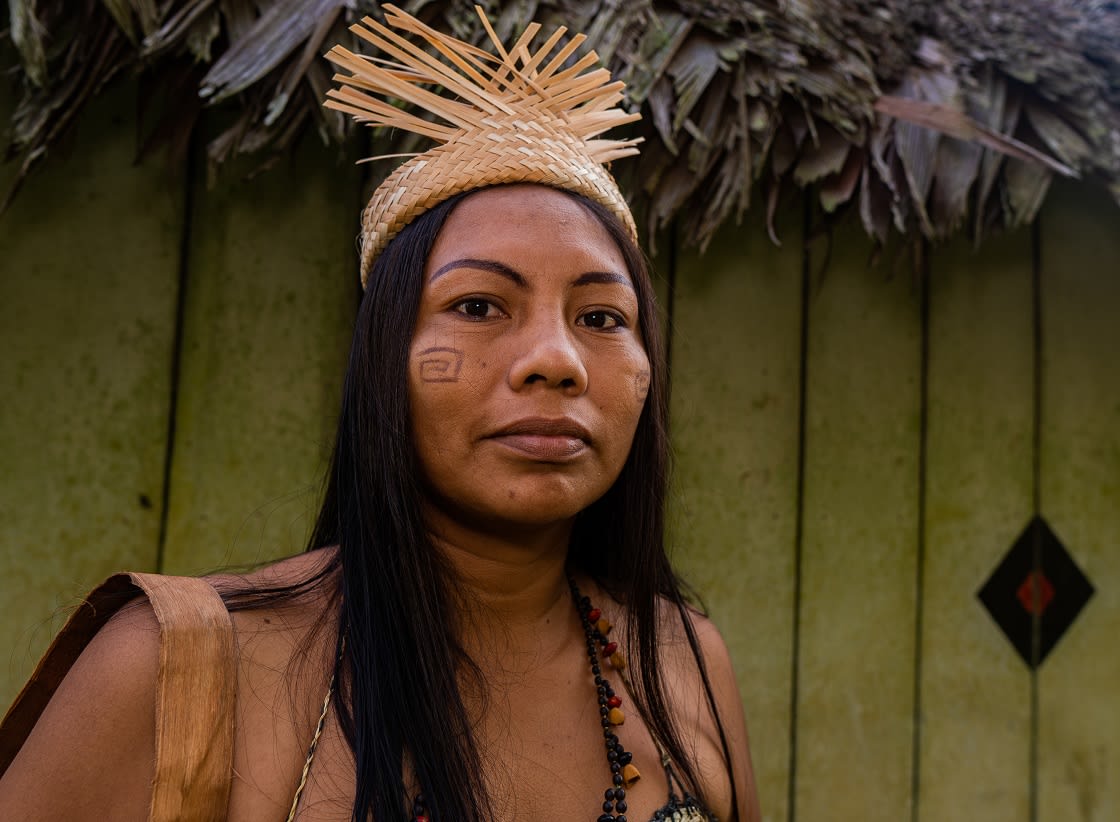
The tribes of the Amazon carry many of their traditional practices into their lifestyle today, one of which is the use of face paint. For centuries, tribal face painting has held a range of meanings, from camouflage whilst hunting to an artistic expression, and has been used in many corners of the world. Amazonian tribes believe that it is the human ability to alter ourselves into something else that inherently separates us from other animals. But what exactly is the meaning behind each painted face?

Native Brazilian Guys Playing Wooden Flutes
Tribal face paint often holds a decorative purpose. Whether it is used in everyday life or for special occasions, it is a means of conveying something with the body. However, each tribe has various connotations and meanings behind the face paint, and each design (and sometimes color as well) represents something wildly different. Here are some of the common meanings behind the face paint of Amazon tribes.
In the Kayapo tribe in the Amazon, the meaning behind different face paint designs is a societal one, which denotes the achievement of a certain level within the hierarchy of tribal society. These markings clearly vary from younger members to elders and become more elaborate as the individual gains greater significance within the community.
Other Amazonian tribes, such as the Mayoruna, have been known to paint their faces with elements to expand the human identity. This may include designs that ‘transform’ the wearer into an animal or mystical figure such as a God so that they will be able to take on their powers. One typical design is face paint to make the wearer look like a powerful jungle animal such as a jaguar, intended to give the wearer the strength and ability of the animal. In other cases, these transformations are used in rituals in which the wearer impersonates an animal or god, and thus ‘becomes’ them for the ceremony.
Within tribes such as the Munduruki, designs may not be meant to transfer powers, but simply convey beautiful patterns found in nature. Tortoise-shell patterns are common daily face paint designs.
The Matses tribe is known for their distinctive face painting, often a combination of black and red across the face. It is believed to make the wearer appear fierce and intends to frighten outsiders (such as neighboring tribes they may have to defend themselves against).

Amazonian Woman
Face paint, as with other decorative devices, also signifies a coming of age within Amazon tribes. One notable example is the Tikuna tribe, which uses black genipapo dye in coming of age ceremonies for women. The black face paint and adornments of eagle feathers dress the girl as she performs a series of rituals and becomes a woman.
Many tribes around the world have relied on face paint as a means of ‘war paint’, and the Yanomamo tribe is amongst them. This tribe is known for their facial piercings and everyday body paint, however, they also use face paint in times of war with other villages. Black paint covers their faces and bodies to show their fierceness, and that they are preparing for war.
As noted above, the Yanomamo tribe is well known for their body and face paint and is one of many tribes that use it for special rituals and ceremonies. Whether it is a feast, funeral, celebration, or religious ritual, elaborate face paint sets the scene. When neighboring villages are invited to take place, varied face paint can also identify the different tribes.

Indigenous Woman From The Huitoto Tribe, Colombian Amazon
For tribes that use face paint as part of their daily attire, different designs may be used simply to convey a different mood that day, just as some of us may do with clothing, hair, or makeup. The Ashaninka tribe alters their face paint each day to reflect how they are feeling.
The face paint of Amazon tribes is yet another tool that communities are able to harvest from their natural environment and use as a means of expressing themselves. Whether it be an expression of character, ranking within a society, a circumstance such as a war or a ceremony, or simply as a means of decoration or personal expression, every Amazon tribe has its own meanings behind its face paint – and this is just the ones we know of! There are many uncontacted tribes in the Amazon Rainforest who no doubt have their own special rituals and face painting traditions. When traveling in the Amazon and meeting local communities, use the opportunity to ask the meaning behind their face paint. Chances are the responses will vary widely between each group, and give you a new glimpse into their culture and traditions.
While Rainforest Cruises aim to provide accurate and up-to-date information, we make no representations as to the accuracy or completeness of any information herein or found by following any link on this site. Rainforest Cruises cannot and will not accept responsibility for any omissions or inaccuracies, or for any consequences arising therefrom, including any losses, injuries, or damages resulting from the display or use of this information.




